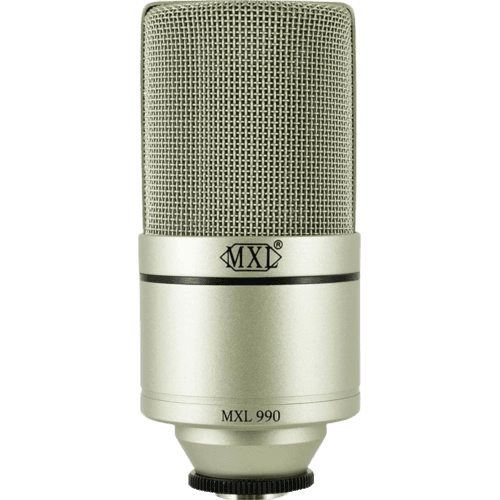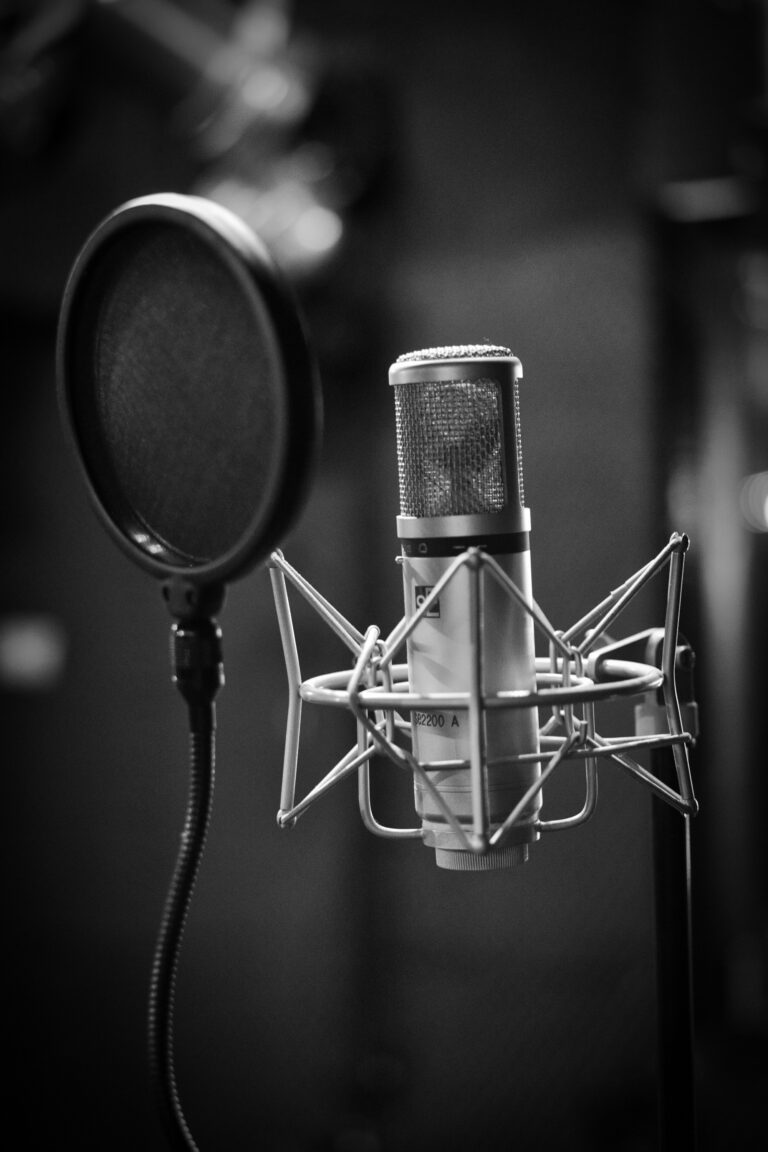Best Microphone For Recording Vocals In A Home Studio
The best microphone for recording vocals in a home studio, is paramount in capturing high-quality vocals. It’s the conduit through which the soul of a performance is transmitted into the digital or analog realm. With the plethora of options available, selecting the right microphone can be a daunting task. Selecting the best microphone for recording vocals in a home studio depends on various factors, including budget, recording environment, desired sound characteristics, and personal preferences. This comprehensive guide aims to navigate you through the labyrinth of microphone choices, offering insights into the key considerations, types of microphones, and recommendations for the best microphones for recording vocals in a home studio setup.
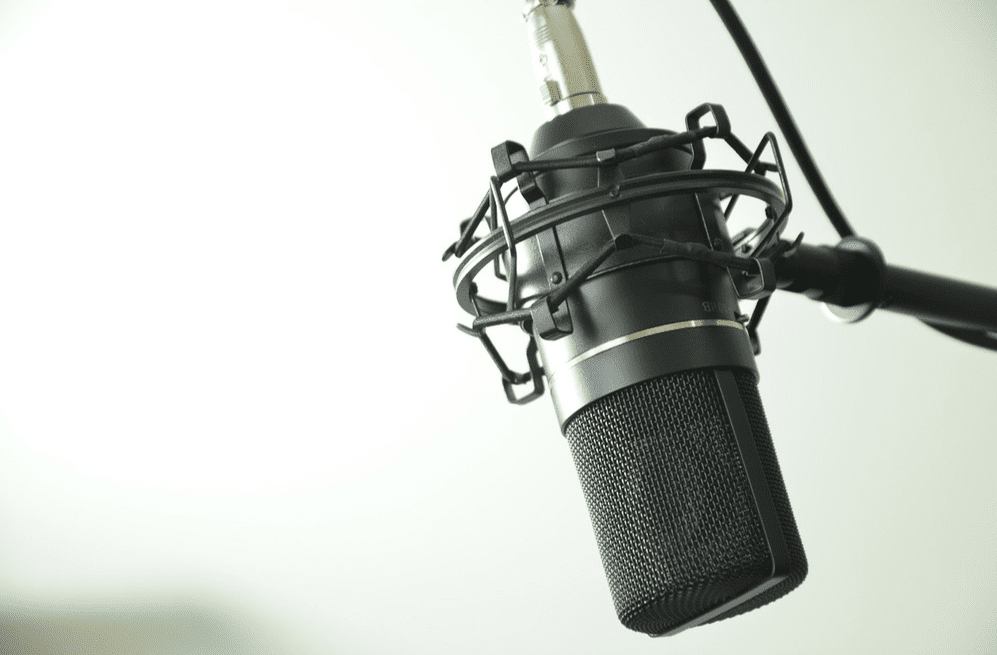
The Ultimate Guide to Choosing The right Microphone
the choice of best microphone for recording vocals in a home studio is a critical decision that can significantly impact the quality of your recordings. By understanding the different types of microphones, key considerations, and recommendations provided in this guide, you can make an informed decision that aligns with your budget, preferences, and recording needs.
Whether you opt for a dynamic, condenser, or ribbon microphone, remember that the ultimate goal is to capture the essence and emotion of the vocal performance, transforming it into a masterpiece that resonates with your audience. it can be overwhelming to choose the best microphone for recording vocals in a home studio setup. Before you invest in a vocal mic for your recording studio, ask yourself:
- Will you need a vocal mic suited to all voice types?
- Or do you need one that suits just your specific voice?
- How quiet is your studio environment? Is it well soundproofed?
- Will you be recording instruments with the same mic?
Asking these questions is an excellent way to gather information and insights that can help you weigh your options and make an informed choice. This is paramount to having a clear goal in mind.
Importance of choosing the right microphone for recording vocals
Selecting the appropriate microphone plays a pivotal role in achieving high-quality vocal recordings in an home studio. Different microphones have unique characteristics that can greatly impact the sound captured. Factors such as frequency response, polar pattern, and sensitivity should be considered when choosing a microphone for your home studio. A microphone that complements the tone and style of the vocalist can enhance the overall quality of the recording. In the next section, we will delve into the key considerations to keep in mind when selecting the best microphone for recording vocals in a home studio.
Understanding Microphone Types
Dynamic Microphones: Dynamic microphones are a type of microphone commonly used in various audio recording and live sound applications due to their ruggedness, affordability, and versatility. They work on the principle of electromagnetic induction to convert sound waves into electrical signals. A dynamic microphone consists of a diaphragm, typically made of a thin plastic or metal film, which vibrates in response to sound waves. Attached to the diaphragm is a voice coil, which is a wire coil suspended within a magnetic field.
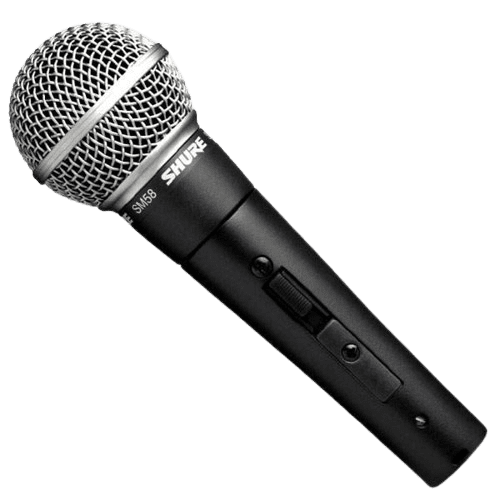
Surrounding the voice coil is a permanent magnet or a magnetic structure. The entire assembly is housed within a sturdy outer casing that protects the delicate internal components. Dynamic microphones are known for their robust construction, making them suitable for use in various environments, including live performances and outdoor recording.
They are generally more affordable compared to other types of microphones like condenser microphones. Dynamic microphones typically have a narrower frequency response compared to condenser microphones, meaning they may not capture as much detail in the high and low-frequency ranges. They tend to be less sensitive compared to condenser microphones, which may require more gain from the preamp or mixer to achieve a suitable recording level. A must though for suitable situations in your home studio.
Condenser Microphones: Condenser microphones, also known as capacitor microphones, are popular in recording studios, broadcasting, and live sound reinforcement due to their high sensitivity and wide frequency response. They work on the principle of capacitance variation. A condenser microphone consists of a thin diaphragm (typically made of gold-sputtered Mylar or metal) placed close to a back plate (also called a back electrode). These two components form a capacitor.
The diaphragm and back plate are electrically charged, with the diaphragm being able to move in response to sound waves. Condenser microphones require a power source to maintain the electric charge on the diaphragm and back plate. This power can be provided either through batteries within the microphone (often found in small, portable condenser microphones) or externally through phantom power supplied by the microphone preamplifier or mixer.
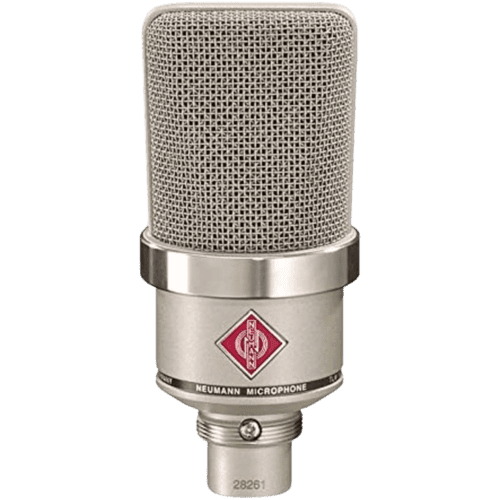
Condenser microphones can have different polar patterns (the directional sensitivity of the microphone). Some common polar patterns include cardioid (heart-shaped, capturing sound from the front while rejecting sounds from the sides and rear), omnidirectional (capturing sound from all directions equally), and figure-eight (capturing sound from the front and rear while rejecting sounds from the sides). Due to their sensitivity and wide frequency response, condenser microphones are often used in studio recording for vocals, acoustic instruments, and capturing ambient sounds. However, they can also be used in live sound reinforcement, broadcasting, and film production. A must have in your home studio.
Ribbon Microphones: Ribbon microphones are a classic type of microphone known for their warm and smooth sound, often used in recording studios for capturing vocals, instruments, and even sound effects.

The heart of a ribbon microphone is a thin strip of metal (often aluminum) suspended within a magnetic field. This metal ribbon is usually corrugated or corrugated to increase its strength and flexibility while maintaining a low mass.
The ribbon element sits between two magnets. These magnets are typically made of powerful materials like neodymium or Alnico, creating a strong magnetic field that interacts with the ribbon. Ribbon microphones also feature a transformer that converts the low impedance signal generated by the ribbon into a higher impedance signal suitable for connection to a microphone preamplifier or recording device. This transformer also helps match the impedance of the microphone to the input impedance of the recording device, ensuring optimal signal transfer.
Due to their low mass, ribbon elements can respond quickly to transient sounds, capturing the subtle nuances and details of a performance. Most ribbon microphones exhibit a figure-8 polar pattern, meaning they pick up sound equally from the front and back while rejecting sound from the sides. This makes them versatile for recording in various acoustic environments and for capturing stereo recordings.
Ribbon microphones are delicate compared to dynamic or condenser microphones. They can be damaged by mishandling, strong gusts of air (such as from a kick drum or guitar amplifier), or high sound pressure levels. Unlike condenser microphones, ribbon microphones generally do not require phantom power. In fact, applying phantom power to a ribbon microphone can damage the delicate ribbon element. It’s crucial to check the manufacturer’s recommendations before connecting any microphone to phantom power.
Key Considerations for Choosing a Vocal Microphone
Polar Patterns
Polar patterns, also known as pickup patterns, describe how microphones capture sound from different directions. Understanding these patterns is crucial in vocal recording because they directly impact how well a microphone captures the voice and rejects unwanted noise. Here are some common polar patterns and their relevance to vocal recording:
- Cardioid: This pattern is heart-shaped, capturing sound mainly from the front while rejecting noise from the sides and rear. It’s ideal for vocal recording because it focuses on the singer while minimizing background noise and room ambiance. Cardioid mics are commonly used in studios for vocals, podcasts, and live performances.
- Supercardioid/Hypercardioid: These patterns are similar to cardioid but have narrower pickup angles, making them even more focused on the source directly in front of the microphone. They provide excellent isolation for vocals in noisy environments but require more precise positioning to avoid picking up unwanted sounds.
- Omnidirectional: Unlike cardioid patterns, omnidirectional mics capture sound equally from all directions. While not commonly used for vocal recording due to their tendency to pick up room noise and reflections, they can be suitable in controlled acoustic environments or for capturing ambient sounds.
- Figure-8 (Bidirectional): This pattern captures sound from the front and back of the microphone while rejecting noise from the sides. It’s less commonly used for vocal recording but can be useful in specific scenarios, such as duets or interviews where two singers or speakers share a single microphone.
Choosing the right polar pattern depends on various factors such as the recording environment, desired sound quality, and the specific application. For most vocal recordings, a cardioid or supercardioid microphone is typically the best choice because of their ability to focus on the singer and minimize background noise. However, understanding polar patterns allows engineers to make informed decisions to achieve the desired sound for any recording situation.
Frequency Response
Frequency response refers to the range of frequencies that a recording or playback device can accurately capture or reproduce. In simpler terms, it’s the ability of a microphone, speaker, or any audio equipment to pick up or emit sounds across the audible spectrum.
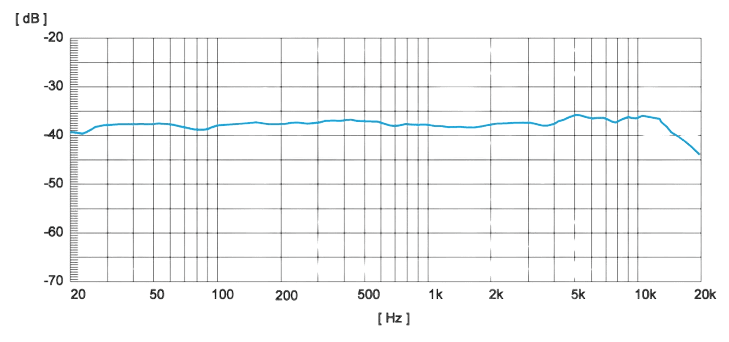
In vocal recording, frequency response is crucial because human voices span a wide range of frequencies. A microphone with a balanced frequency response will capture the nuances of a voice accurately, reproducing the full spectrum of highs, mids, and lows without emphasizing or attenuating any particular range. Here’s how frequency response impacts vocal recording:
- Clarity and Detail: A microphone with a flat frequency response across the vocal range will capture the natural timbre of the voice, preserving its clarity and detail. This is essential for capturing nuances such as breathiness, raspiness, or smoothness in a vocalist’s performance.
- Tonal Balance: A microphone with a tailored frequency response can be used to shape the tonal balance of the recorded vocals. For example, a microphone with a boost in the high frequencies can add airiness or presence to a vocal track, while a boost in the low frequencies can enhance warmth or depth.
- Consistency: Consistent frequency response ensures that vocal recordings sound uniform across different microphones or recording sessions. This is particularly important in multi-microphone setups or when recording vocals for a project that requires consistency in sound quality.
- Room Acoustics: The frequency response of a microphone can also interact with the acoustics of the recording environment. For instance, if a room has pronounced resonances or reflections at certain frequencies, a microphone with a flat response may pick up those imperfections more accurately.
- Mixing and Processing: Understanding the frequency response of the microphone used for recording vocals is crucial during the mixing and processing stages. Engineers may apply EQ (equalization) to enhance or correct the recorded vocals, taking into account the microphone’s inherent frequency response to achieve the desired sound. The microphone you choose for recording vocals will affect the final mix please keep this in mind.
In summary, frequency response plays a significant role in vocal recording by influencing the clarity, tonal balance, consistency, and interaction with room acoustics. Choosing the Best microphone for recording vocals in a home studio with an appropriate frequency response is essential for capturing the nuances of a vocalist’s performance accurately and achieving the desired sound in the final mix.
Sensitivity and SPL Handling
In vocal recording, sensitivity and Sound Pressure Level (SPL) handling are crucial aspects of microphones that directly impact the quality and accuracy of the recorded sound.
- Sensitivity: This refers to how effectively a microphone converts sound waves into electrical signals. A microphone with higher sensitivity will produce a stronger electrical signal in response to the same sound pressure level compared to a less sensitive microphone. Sensitivity is typically measured in mV/Pa (millivolts per Pascal) or dBV/Pa (decibels relative to 1 volt per Pascal).
- Importance: Higher sensitivity allows the microphone to capture quieter sounds more accurately, making it suitable for recording softer vocal performances or details in the voice. However, overly sensitive microphones can also pick up unwanted background noise or handling noise, so finding the right balance is key.
- SPL Handling: This refers to the maximum sound pressure level a microphone can handle before distorting the signal. Sound pressure level is a measure of the intensity of a sound wave, typically measured in decibels (dB). Microphones with higher SPL handling capabilities can accurately capture louder sound sources without distortion or clipping.
- Importance: In vocal recording, singers can produce a wide range of sound levels, from soft whispers to powerful belting. A microphone with good SPL handling ensures that it can accurately capture the full dynamic range of the vocalist without introducing distortion or losing fidelity, even during loud passages or sudden peaks in volume.
Choosing the Best microphone for recording vocals in a home studio with appropriate sensitivity and SPL handling capabilities depends on various factors, including the vocalist’s style, the environment of the recording space, and the intended use of the recordings. For example, condenser microphones are generally more sensitive and suitable for capturing nuanced vocal performances, while dynamic microphones are often preferred for live performances or recording louder sources due to their robust SPL handling capabilities.
Budget
Budget considerations play a significant role in determining the best microphone for recording vocals in a home studio to choose, as they dictate the range of options available to you. Here’s how budget considerations can influence microphone choices:
- Microphone Type: Different microphone types come with varying price ranges. For example, dynamic microphones are generally more affordable compared to condenser microphones. So, if your budget is limited, you might opt for a dynamic microphone for its cost-effectiveness.
- Quality vs. Price: Generally, higher-priced microphones tend to offer better sound quality and durability. However, there are exceptions, and some mid-range or budget-friendly microphones can still provide excellent performance for specific applications. Assessing the balance between quality and price is essential.
- Specific Needs: Your specific recording needs will also influence your microphone choice. For example, if you’re recording vocals, you might prioritize a microphone with a particular frequency response or sensitivity. If you’re recording instruments, you might prioritize different characteristics. Understanding your needs helps you allocate your budget effectively.
- Accessories and Additional Costs: Consider additional costs beyond just the microphone itself. Accessories like shock mounts, pop filters, stands, and cables can add to the overall cost. Factor these into your budget to ensure you have everything you need for your setup.
- Long-Term Investment: While it might be tempting to opt for the cheapest option upfront, it’s essential to consider the long-term investment. Higher-quality microphones often last longer and provide better performance over time, potentially saving you money in the long run by avoiding the need for frequent replacements or upgrades.
- Budget-Friendly Brands: Some brands offer quality microphones at more affordable prices. Researching reputable brands known for offering good value for money can help you find a suitable microphone within your budget constraints.
Ultimately, while budget considerations are important, it’s crucial to strike a balance between cost and quality to ensure you get the best microphone for your needs within your budget constraints.
Best Microphone for Recording Vocals in a Home Studio
Entry-Level Microphones
For beginners and hobbyists looking for budget-friendly microphones. These microphones offer a good starting point for building your home studio setup without breaking the bank. Here are a few recommendations across different types
The AT2020 offers excellent audio quality at an affordable price point. It’s a versatile microphone suitable for vocals, podcasting, and home studio recordings. An insane value-for-money condenser mic that’s a great all-rounder. The Audio Technica AT2020 has gotten many plaudits for its open and natural tone, which at this price point is really quite impressive. For use on vocals, pianos, and for capturing room ambiance it performs remarkably well, you can even use it on a guitar cab to go alongside the more traditional dynamic mic sound too.
The NT1-A is praised for its low self-noise and clarity, making it a popular choice for studio vocals and acoustic instruments. It’s often compared to the AT2020, with some users preferring the NT1-A for its smoother sound and lower noise floor. The frequency response of the NT1-A is 20 Hz to 20 kH. If you didn’t know, that is the range that humans have. For those technical folks out there, there is a maximum SPL of 137 db. This means that the NT1-A can handle high sound pressure levels without adding any distortion.
The MXL 990 remains one of the industry’s most ground-breaking microphones. The first high quality condenser microphone to come into reach of working musicians, the MXL 990 has a FET preamp and a large diaphragm for truly professional sound quality in both digital and analog recordings. This revolutionary condenser microphone continues to astound artists with its silky, high end and tight, solid low and mid range reproduction.
Verdict
The Rode NT1-A is a popular condenser microphone known for its clear sound and low self-noise and turns out to be my favorite entry level microphone base on my experience using it. It’s a favorite among home studio owners and professional musicians alike for its versatility and affordability. It’s praised for its transparent sound reproduction and ability to capture subtle details in recordings. Overall, it’s a solid choice for anyone looking for a high-quality microphone without breaking the bank.
Mid-Range Microphones
These mid-range microphones strike a balance between quality and affordability, making them suitable choices for intermediate-level musicians, producers, and engineers who want professional-grade sound without breaking the bank. Consider your specific recording needs and preferences when choosing the right microphone for your setup.
The Neumann TLM 102 is a compact large-diaphragm condenser microphone that offers the legendary Neumann sound at a more affordable price point. It delivers a clear, detailed, and transparent sound with low self-noise, making it ideal for vocals, acoustic instruments, and studio recordings. The TLM 102 features a cardioid polar pattern and a wide frequency response for capturing a wide range of audio sources. he TLM 102 brings Neumann quality to even the smallest studio. Like its more expensive siblings, the TLM 102 combines technical excellence with a beautifully balanced sound for silky vocals, crisp guitars and powerful drums.

Recording Mic Ideal For Detailed Lead Vocals And Solo Instruments Outstanding Dynamic Range – Up To 156 Db Spl Switchable 20 Db Attenuation Pad And Low Cut Switch Integrated Capsule Suspension – Reduced Mechanical Noise Shock And Scratch Resistant All Metal Body. he AKG C214 Large Diaphragm Microphone is a premium-grade condenser microphone designed for multiple recording applications. The AKG C214 provides an affordable alternative for the high-end C414 family. The microphone utilises a high-end one-inch capsule with an integrated suspension for optimal audio performance.

The Rode NT2-A is a favorite among home studio owners and project studio users. This multi-pattern condenser microphone offers selectable polar patterns (cardioid, omnidirectional, and figure-8), allowing for versatile recording setups. The NT2-A delivers a transparent and detailed sound with low self-noise, making it suitable for vocals, acoustic instruments, and even drum overheads.
The R DE NT2-A is a professional large capsule (1″) condenser microphone with variable pickup pattern, variable hi-pass filter and a variable pad. The R˜DE NT2-A Large-Capsule Studio Condenser Microphone is a professional, one-inch condenser microphone with variable pick-up patterns, high-pass filter, and pad. 3 – 3-position switches located on the mic body provide selection of figure 8, cardioid, or omni polar pick-up patterns; from a flat response to either 80Hz or 40Hz high-pass filter; and pad adjustments of 0dB, -5dB, or -10dB attenuation. The heart of the NT2-A is the Australian-designed and manufactured Type HF1 dual-diaphragm capsule.
Verdict
Neumann TLM 102 offers the legendary Neumann sound at a more affordable price point. It delivers a clear, detailed, and transparent sound with low self-noise, making it ideal for vocals, acoustic instruments, and studio recordings. I love the Neumann brand with a warmth and smoothness that is hard to beat.
These mid-range microphones strike a balance between quality and affordability, making them suitable choices for intermediate-level musicians, producers, and engineers who want professional-grade sound without breaking the bank. Consider your specific recording needs and preferences when choosing the right microphone for your setup.
High-End Microphones
For a professional home studio setup, you’ll want microphones that offer excellent sound quality, durability, and versatility. When it comes to recording a performance the pros would be proud of, choosing the right vocal microphone can make all the difference.

The award-winning TLM 103 is the ideal large diaphragm microphone for all professional and semi-professional applications requiring the utmost in sound quality on a limited budget. A standard name in high-end recording studios around the world, Neumann mics deliver the professional touch that’s needed to capture high-quality audio.
The TLM 103 is fast becoming a standard for home recording and the music industry. The large-diaphragm Neumann TLM-103 Microphone provides platinum-quality sound on a bronze budget, using transformerless circuitry for ultralow self-noise and handling high sound pressure levels up to 138dB. The TLM-103’s cardioid polar pattern optimizes attenuation of unwanted sound and suppresses feedback and comes with a rugged wire mesh grille that helps protect the capsule.

A versatile condenser microphone with multiple polar patterns, making it suitable for various recording applications including vocals, acoustic instruments, and drum overheads. It offers a detailed and transparent sound reproduction. The AKG C 414 XLII multi-pattern condenser microphone offers a choice of nine polar patterns for the perfect sonic capture for every application.
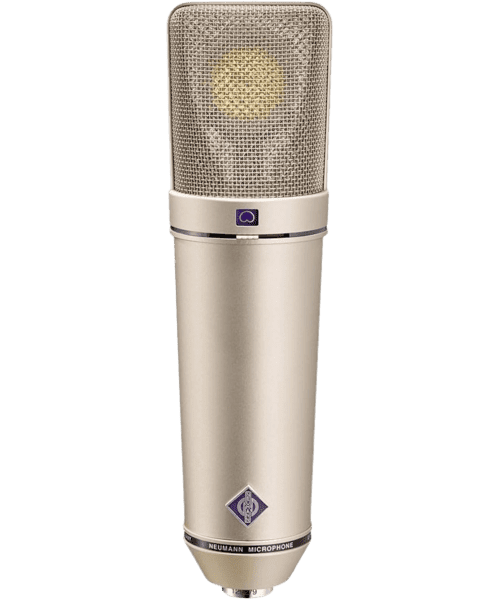
Widely regarded as one of the best studio microphones ever made, the U87 is a large-diaphragm condenser microphone known for its warm, clear, and natural sound. It’s excellent for vocals, instruments, and virtually any studio recording application. The U 87 has been the standard of the recording industry since 1967. This microphone is famous for its warm sound and well-balanced characteristics. Equipped with a large dual-diaphragm capsule with 3 selectable directional patterns: omnidirectional, cardioid, and figure-8.
Verdict
Neumann TLM 103 I chose this microphone because of my many years of using it, it will give you value for your money. This microphone offers the legendary Neumann sound at a more affordable price point. If money is not an issue the Neumann U87 is a great choice as it is Widely regarded as one of the best studio microphones ever made.
This microphone delivers a clear, detailed, and transparent sound with low self-noise, making it ideal for vocals, acoustic instruments, and studio recordings. By now you will find that I am biased towards the Neumann brand. But please understand I have used a variety of microphones, but this gave me such satisfaction it’s unbelievable. ultimately the choice is yours and I hope this article was able to help you choose.
Setting up and optimizing your microphone for the best sound quality
Setting up and optimizing your microphone correctly is crucial for achieving the best sound quality in your home studio recordings. Ensure you position the microphone at the right distance from the vocalist, considering factors like proximity effect for condenser mics. Experiment with different placements to find the optimal position that captures the vocals most effectively. Additionally, make adjustments to your recording software settings to optimize levels and reduce background noise. By investing time in setting up and fine-tuning your microphone, you can elevate the quality of your vocal recordings significantly.
Maintaining and caring for your microphone
Maintaining and caring for your microphone is essential for ensuring its longevity and optimal performance. Regularly clean the microphone grille to prevent dust and debris buildup that can affect sound quality. Store your microphone in a protective case when not in use to safeguard it from potential damage. Avoid exposing the microphone to extreme temperatures or humidity, as this can impact its sensitivity and performance. If your microphone requires any specific maintenance, refer to the manufacturer’s guidelines for proper care instructions. By prioritizing the maintenance of your microphone, you can continue to enjoy high-quality vocal recordings in your home studio for years to come.
Conclusion
Investing in a high-quality microphone is crucial for achieving professional-grade vocal recordings in your home studio. By maintaining and caring for your microphone as outlined, you can prolong its lifespan and ensure top-notch performance. Remember, proper storage and cleaning practices are key to preserving the integrity of your microphone and capturing clear, pristine vocals. Additionally, adhering to the manufacturer’s guidelines for maintenance will help you get the most out of your investment.
Ultimately, a well-maintained microphone will not only enhance your recording experience but also elevate the overall quality of your audio productions. Choose wisely, care diligently, and let your vocals shine!
When selecting a microphone for recording vocals in a home studio, consider factors like budget, vocal type, and personal preference. Some popular options include the Neumann 102 for its versatile performance, the Audio-Technica AT2020 for its affordability and warm sound, the Rode NT1-A for its clear sound and included accessories, the AKG C414 for professional-grade quality at a reasonable price, and the Neumann TLM 103 for exceptional detail and accuracy, albeit at a higher cost. Ultimately, it’s essential to test different microphones to find the one that best suits your voice and recording environment.
The best microphone for recording vocals in a home studio will come down to your situation and needs. What I have tried to do in this article is give you options based on my experience. choosing the best microphone for recording vocals in a home studio will be easier since now you have a deeper understanding of your needs. Over the years I have used a lot of microphones to record vocals and have come to like a few that stand out. The Neumann 102 and 103 stand out the most for me. The warmth and smoothness is unbelievable.



